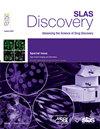寡核苷酸的脱靶效应及临床前评估方法
IF 2.7
4区 生物学
Q2 BIOCHEMICAL RESEARCH METHODS
引用次数: 0
摘要
基于寡核苷酸的疗法,如反义寡核苷酸(ASOs)、小干扰rna (sirna),代表了一类通过序列特异性特异性靶向基因转录或翻译机制的治疗剂。这些药物在治疗遗传性疾病,包括脊髓性肌萎缩症,以及恶性肿瘤,病毒感染和代谢疾病方面显示出巨大的希望。然而,意想不到的毒性仍然构成相当大的挑战,并且仍然是寡核苷酸疗法(ONTs)发展中的关键安全问题。脱靶毒性可能由与靶标相似但不相同的序列杂交、与杂交无关的序列相关或与序列和杂交无关的效应引起。这种效应可能导致转录物水平降低、翻译率降低或剪接异常,使用与期望的靶上效应相同的分子途径和蛋白质机制。目前,还没有建立系统的脱靶毒性鉴定和评价方法,这可能会阻碍安全方法的优化。本综述通过总结和分析已批准的寡核苷酸及其脱靶试验,描述了显著的非临床毒性和临床不良反应,包括非临床脱靶效应的局限性和潜在的脱靶机制。此外,本文还讨论并强调了导致ont脱靶的因素,系统地提供了临床前评估的方法和工作流程,通过管理不可避免的脱靶效应,提高了寡核苷酸疗法从非临床到临床试验的转移价值。本文章由计算机程序翻译,如有差异,请以英文原文为准。
Off-target effects of oligonucleotides and approaches of preclinical assessments
Oligonucleotide-based therapies, such as antisense oligonucleotides (ASOs), small interfering RNAs (siRNAs), represent a class of therapeutic agents that specifically target gene transcription or translation mechanisms through sequence specificity. These pharmaceuticals exhibit significant promise in the treatment of genetic disorders, including spinal muscular atrophy, as well as malignancies, viral infections, and metabolic diseases. Nonetheless, unintended toxicity continues to pose a considerable challenge and remain a critical safety concern in the development of oligonucleotide therapeutics (ONTs). Off-target toxicity may be caused by hybridization to sequences that are similar but not identical to the target, hybridization-independent sequence related, or sequence- and hybridization-independent effects. The effects may result in diminished transcript levels, decreased translation rates, or anomalous splicing, employing same molecular pathways and protein machinery as the desired on-target effects. Currently, there exists no established methodology for the systematic identification and evaluation of off-target toxicity, which may hinder the optimization of safety approaches. This review delineates significant nonclinical toxicities and clinical adverse effects by summarizing and analyzing approved oligonucleotides with their off-target assays, encompassing the limitations of nonclinical off-target effects and the potential off-target mechanisms. Plus, it discusses and emphasizes the factors that lead to the off target of ONTs, systematically offers approaches and workflows of preclinical assessments to enhance the transfer value of oligonucleotide therapies from nonclinical to clinical trials by managing unavoidable off-target effects.
求助全文
通过发布文献求助,成功后即可免费获取论文全文。
去求助
来源期刊

SLAS Discovery
Chemistry-Analytical Chemistry
CiteScore
7.00
自引率
3.20%
发文量
58
审稿时长
39 days
期刊介绍:
Advancing Life Sciences R&D: SLAS Discovery reports how scientists develop and utilize novel technologies and/or approaches to provide and characterize chemical and biological tools to understand and treat human disease.
SLAS Discovery is a peer-reviewed journal that publishes scientific reports that enable and improve target validation, evaluate current drug discovery technologies, provide novel research tools, and incorporate research approaches that enhance depth of knowledge and drug discovery success.
SLAS Discovery emphasizes scientific and technical advances in target identification/validation (including chemical probes, RNA silencing, gene editing technologies); biomarker discovery; assay development; virtual, medium- or high-throughput screening (biochemical and biological, biophysical, phenotypic, toxicological, ADME); lead generation/optimization; chemical biology; and informatics (data analysis, image analysis, statistics, bio- and chemo-informatics). Review articles on target biology, new paradigms in drug discovery and advances in drug discovery technologies.
SLAS Discovery is of particular interest to those involved in analytical chemistry, applied microbiology, automation, biochemistry, bioengineering, biomedical optics, biotechnology, bioinformatics, cell biology, DNA science and technology, genetics, information technology, medicinal chemistry, molecular biology, natural products chemistry, organic chemistry, pharmacology, spectroscopy, and toxicology.
SLAS Discovery is a member of the Committee on Publication Ethics (COPE) and was published previously (1996-2016) as the Journal of Biomolecular Screening (JBS).
 求助内容:
求助内容: 应助结果提醒方式:
应助结果提醒方式:


